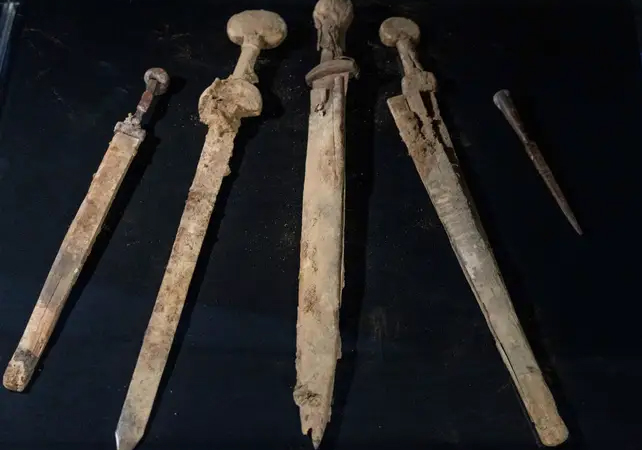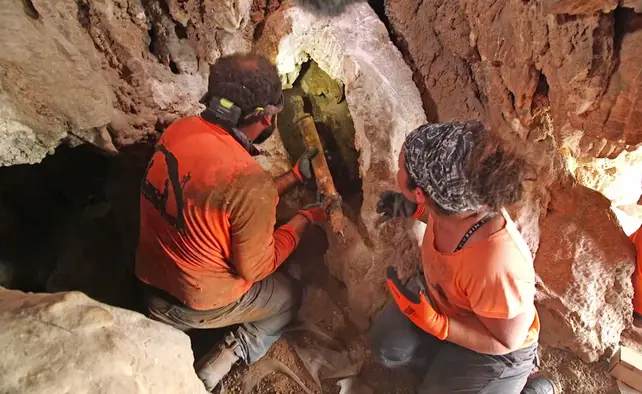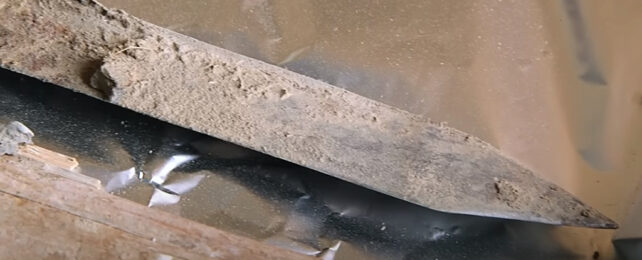Israeli researchers made a rare find during a survey of a Dead Sea cave: Four perfectly preserved Roman swords thought to have been used in battle 1,900 years ago.
The swords were likely "booty" hidden by rebels from an opposing faction, who would have been in danger if they were caught carrying the Roman weapons, Eitan Klein, one of the directors of the Judean Desert Survey Project who worked on the dig, said in a statement.

On Wednesday, the Israeli Antiquities Authority announced the discovery of the cache in a small, almost inaccessible Judean Desert cave near the Dead Sea. In a video detailing their expedition, researchers said they removed the swords from a tight crevice in the cave.
"We are talking about an extremely rare find, said Dr. Eithan Klein, a Judean Desert Survey researcher with the Israel Antiquities Authority, "The like of which has never been found in Israel."

Scientists said the swords featured wooden and leather hilts, wooden scabbards, and steel blades that were amazingly preserved after spending almost 2,000 years in a remote desert cave.
Eli Escusido, director of the Israel Antiquities Authority, said the swords were as sharp "as if they had only just been hidden away today," the BBC reported.
The archaeologists also found a Roman pilum, a heavy javelin.
The swords, the archaeologists said, were weapons typically used by Roman soldiers stationed in Judea.

"The hiding of the swords and the pilum in deep cracks in the isolated cave north of 'En Gedi, hints that the weapons were taken as booty from Roman soldiers or from the battlefield, and purposely hidden by the Judean rebels for reuse," Klein said.
Klein said it is possible the weapons may have been stashed at the time of the Bar Kokhba Revolt of 132–135 BCE, but added that he and researchers are conducting further work to pinpoint who owned the weapons, where they were forged, and what historical events they could have been used in.
This article was originally published by Business Insider.
More from Business Insider: